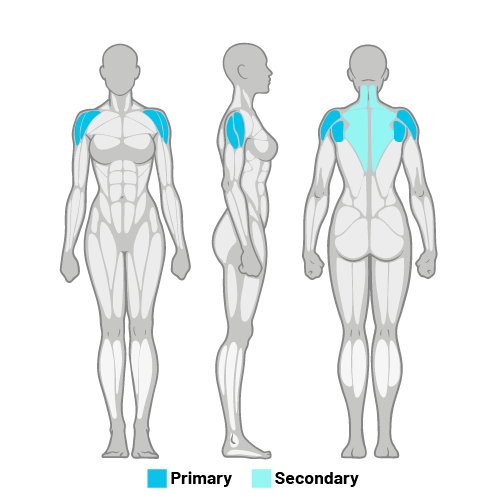Shoulder rolls are a gentle mobility exercise that activates scapular muscles. By rotating your shoulders in circular motions, this exercise helps improve flexibility and reduce tension, promoting overall shoulder health.
How To Do The Shoulder Roll Exercise Properly

- Stand tall, arms relaxed at sides.
- Roll shoulders up, back, and down.
- Keep chin level, breathe steadily.
- Reverse direction after several circles.
- Move comfortably, avoid pain or strain.
How Your Shoulder Moves Beneath the Surface
Your shoulders depend on a complex web of muscles that stabilize the blades and control smooth rotation. According to NIH research on shoulder anatomy, improving muscle coordination and range of motion helps prevent stiffness and keeps movement pain-free. The deltoids, trapezius, and rhomboids lift and anchor the shoulder blades, while the rotator cuff supports the joint through every circle. When these systems work together, your arms glide instead of grind.

How Shoulder Rolls Relieve Tension and Improve Function
Clinical research on recovery confirms that guided PT exercises can reduce discomfort and restore flexibility. Gentle shoulder rolls help retrain healthy movement patterns, improve circulation, and release tension through the upper back and neck. Over time, this practice improves posture and builds lasting shoulder resilience.
Tips to Master the Motion
Think smooth, not big. Let your breath lead each circle—inhale as the shoulders rise, exhale as they fall. If one side feels tight, make the circle smaller and slower. The goal is rhythm and balance, not force.
Watch Out For:
- Shrugging toward your ears
- Rushing or swinging your arms
- Holding your breath
- Twisting your torso instead of moving through your shoulders
The Role of Physical Therapy in Shoulder Recovery
Studies on shoulder pain management show that most cases improve with consistent physical therapy and movement training—long before surgery becomes necessary. Active recovery builds strength, restores joint balance, and teaches the body to move without irritation. Shoulder rolls are one of those simple, evidence-based ways to keep the process moving forward.
Preventing Common Shoulder Injuries
Many common shoulder injuries begin with poor mobility or limited motion through the shoulder blades. Clinical resources from the University of Rochester explain that overuse and poor shoulder mechanics can lead to tendon irritation and impingement over time. Practicing shoulder rolls encourages consistent mobility movement through the shoulder joint, improving how the scapular muscles coordinate and share the workload. This keeps the joint supple and responsive, helping protect your shoulders during daily activity, sports, and strength training.
Keep Your Shoulders Moving With Sporty Doctor
Small movements can make a big difference. Keep your shoulders strong, flexible, and pain-free with physician-designed mobility programs inside the Sporty Doctor App.














